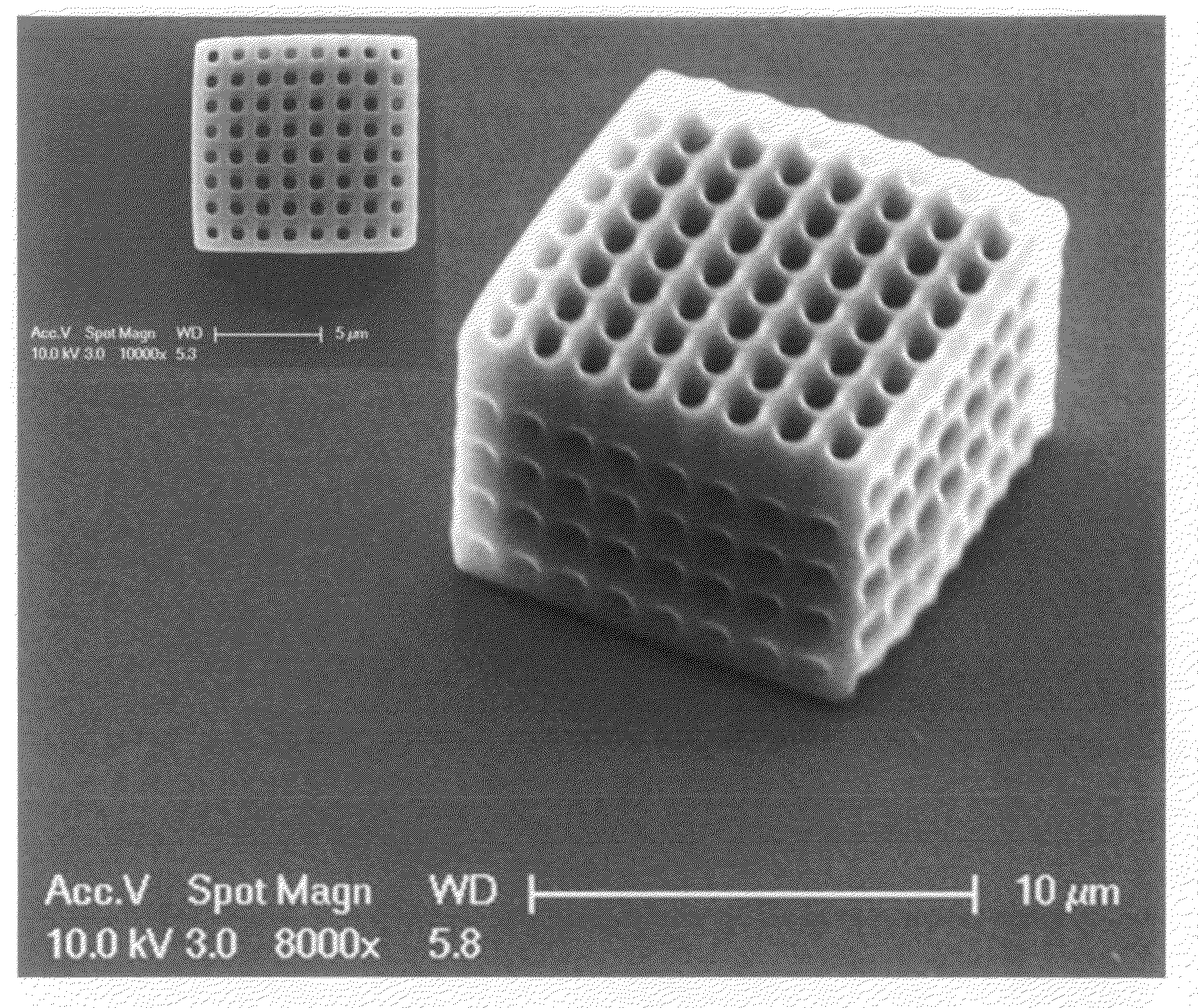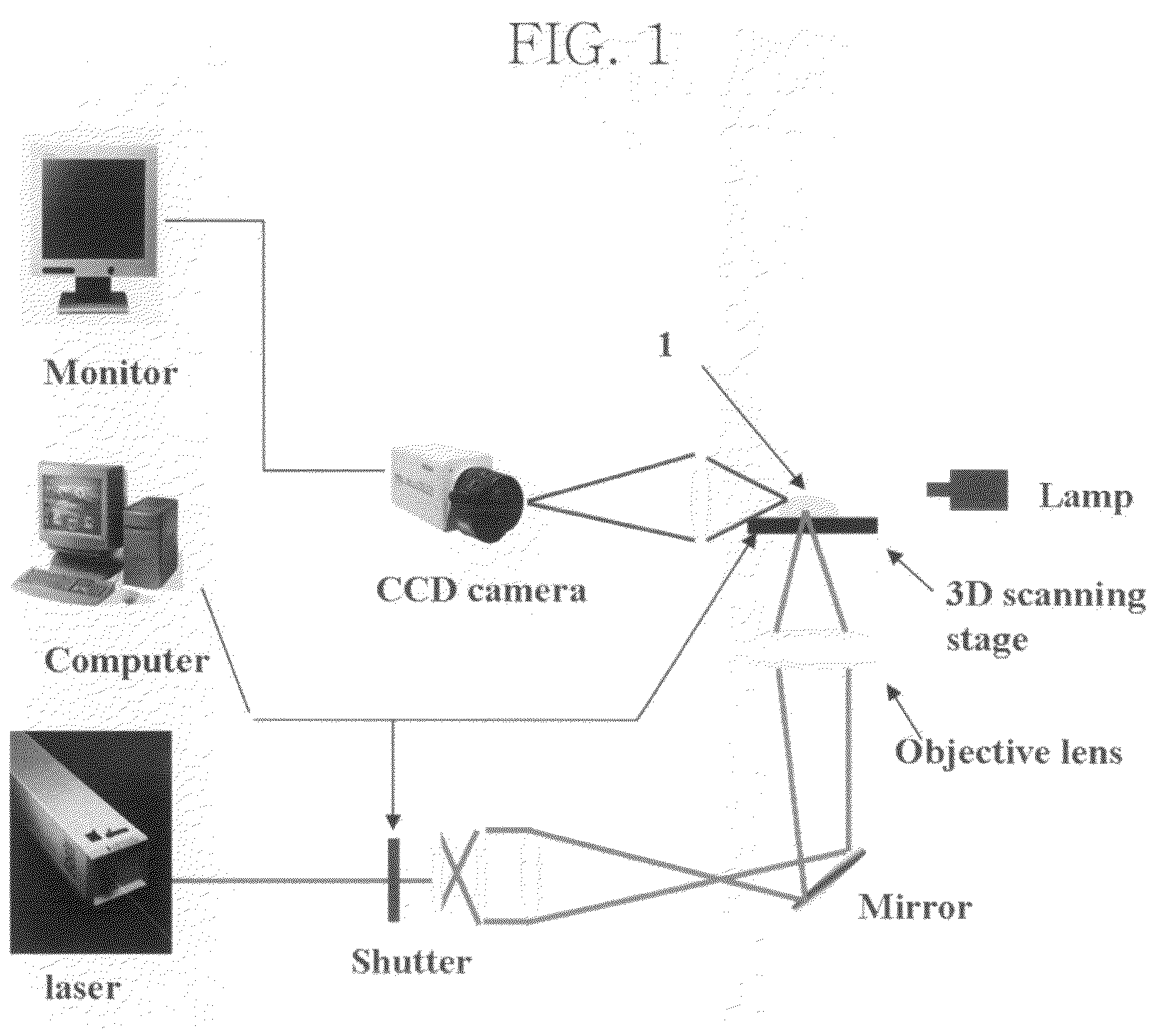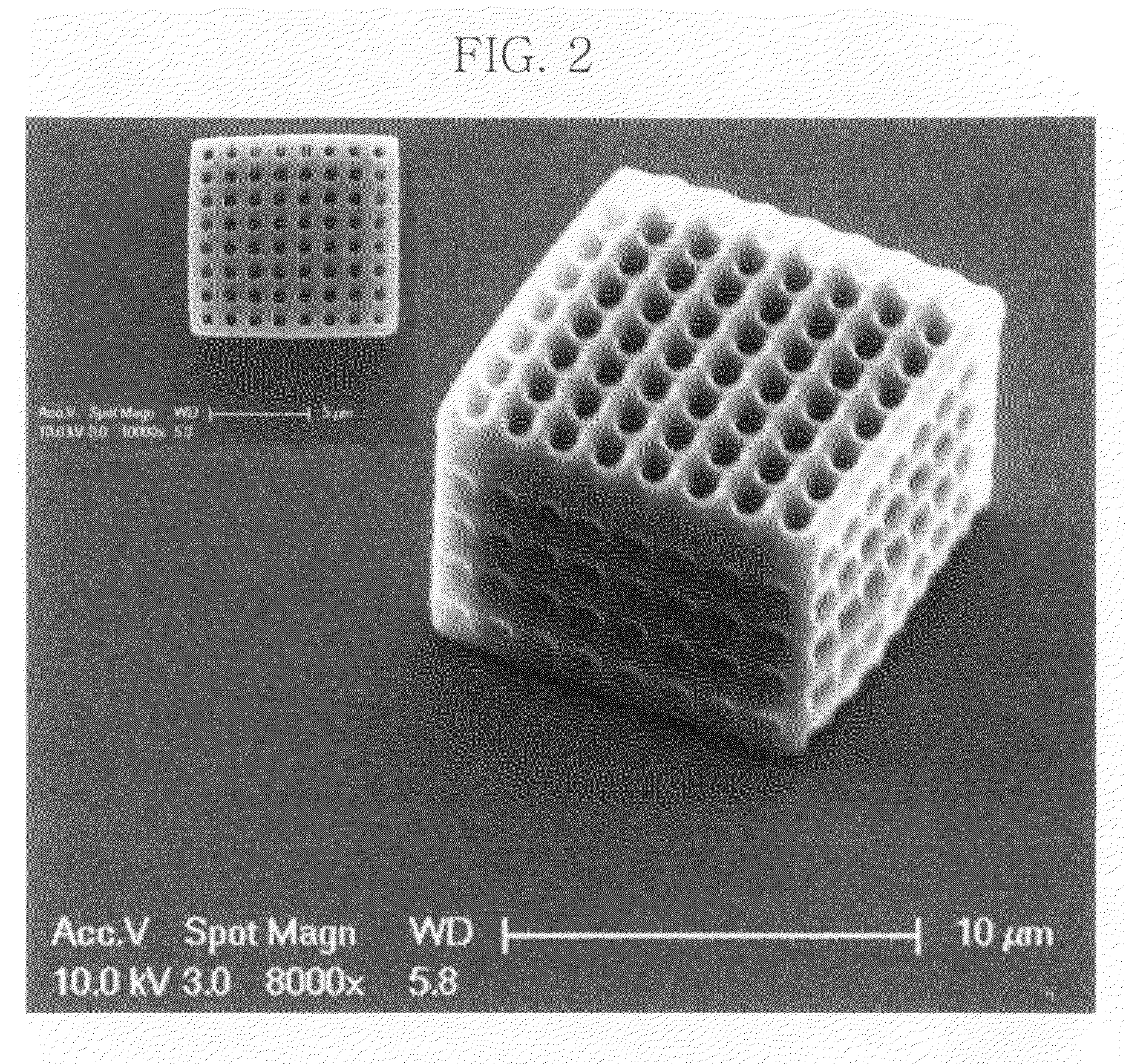Photosensitive composition, microfabrication method using the same, and microfabricated structure thereof
- Summary
- Abstract
- Description
- Claims
- Application Information
AI Technical Summary
Benefits of technology
Problems solved by technology
Method used
Image
Examples
example 1
Formation of Three-Dimensional Microstructure Containing Silver Nanoparticles
[0091]A photosensitive composition, comprising about 10 g of a multifunctional epoxy resin (SU-8, Shell Chemicals), about 0.7 g of Rhodamine B, about 50 g of γ-butyrolactone as an organic solvent, about 1 g of silver oxide (Aldrich), 0.1 g of the photoacid generator of Formula 16 below, and about 0.01 g of an antifoaming agent (KS-66, Shin-Etsu Chemical) as an additive, was prepared. The composition was sonicated for about 1 hour, so that respective components were sufficiently mixed, filtered with an about 0.5 μm syringe, subjected to spin coating at about 3000 rpm on glass surface-treated with CF4 plasma, and then dried at about 120° C. for about 3 minutes to remove the organic solvent remaining on the coated surface. A desired three-dimensional pattern of the film was formed using a Ti:Sapphire 780 nm laser beam, and the x- and y-axes of the laser beam were controlled by means of a galvano scanner having...
example 2
Formation of Three-Dimensional Microstructure Containing Silver Nanoparticles
[0092]A three-dimensional microstructure was fabricated in the same manner as in Example 1, with the exception that about 10 g of urethane acrylate (SCR-500, Japan Synthetic Rubber Co. Ltd.) was used instead of the multifunctional epoxy resin, about 0.2 g of benzophenone was used as a photoinitiator instead of the photoacid generator, and a fluorene derivative was used as the two-photon photosensitizer.
example 3
Formation of Three-Dimensional Microstructure Containing Silver Nanoparticles
[0093]A three-dimensionally microstructure was fabricated in the same manner as in Example 1, with the exception that about 10 g of urethane acrylate (SCR-500, Japan Synthetic Rubber Co. Ltd.) was used instead of the multifunctional epoxy resin, about 0.3 g of 2,4-diethyl thioxanthone was used as a photoinitiator instead of the photoacid generator, and about 3 g of silver trifluoroacetate (Aldrich) was used instead of silver oxide (Aldrich).
*Evaluation of Properties of Microfabricated Structure*
[0094]In order to test whether the microfabricated structure of Example 1 actually contained silver nanoparticles, the structure was observed using an SEM. The results may be shown in FIG. 3. With reference to FIG. 3, the silver nanoparticles were in an agglomerated form of about 10˜ about 30 nm on the surface of the microfabricated structure.
PUM
| Property | Measurement | Unit |
|---|---|---|
| Composition | aaaaa | aaaaa |
| Structure | aaaaa | aaaaa |
| Photosensitivity | aaaaa | aaaaa |
Abstract
Description
Claims
Application Information
 Login to View More
Login to View More - Generate Ideas
- Intellectual Property
- Life Sciences
- Materials
- Tech Scout
- Unparalleled Data Quality
- Higher Quality Content
- 60% Fewer Hallucinations
Browse by: Latest US Patents, China's latest patents, Technical Efficacy Thesaurus, Application Domain, Technology Topic, Popular Technical Reports.
© 2025 PatSnap. All rights reserved.Legal|Privacy policy|Modern Slavery Act Transparency Statement|Sitemap|About US| Contact US: help@patsnap.com



